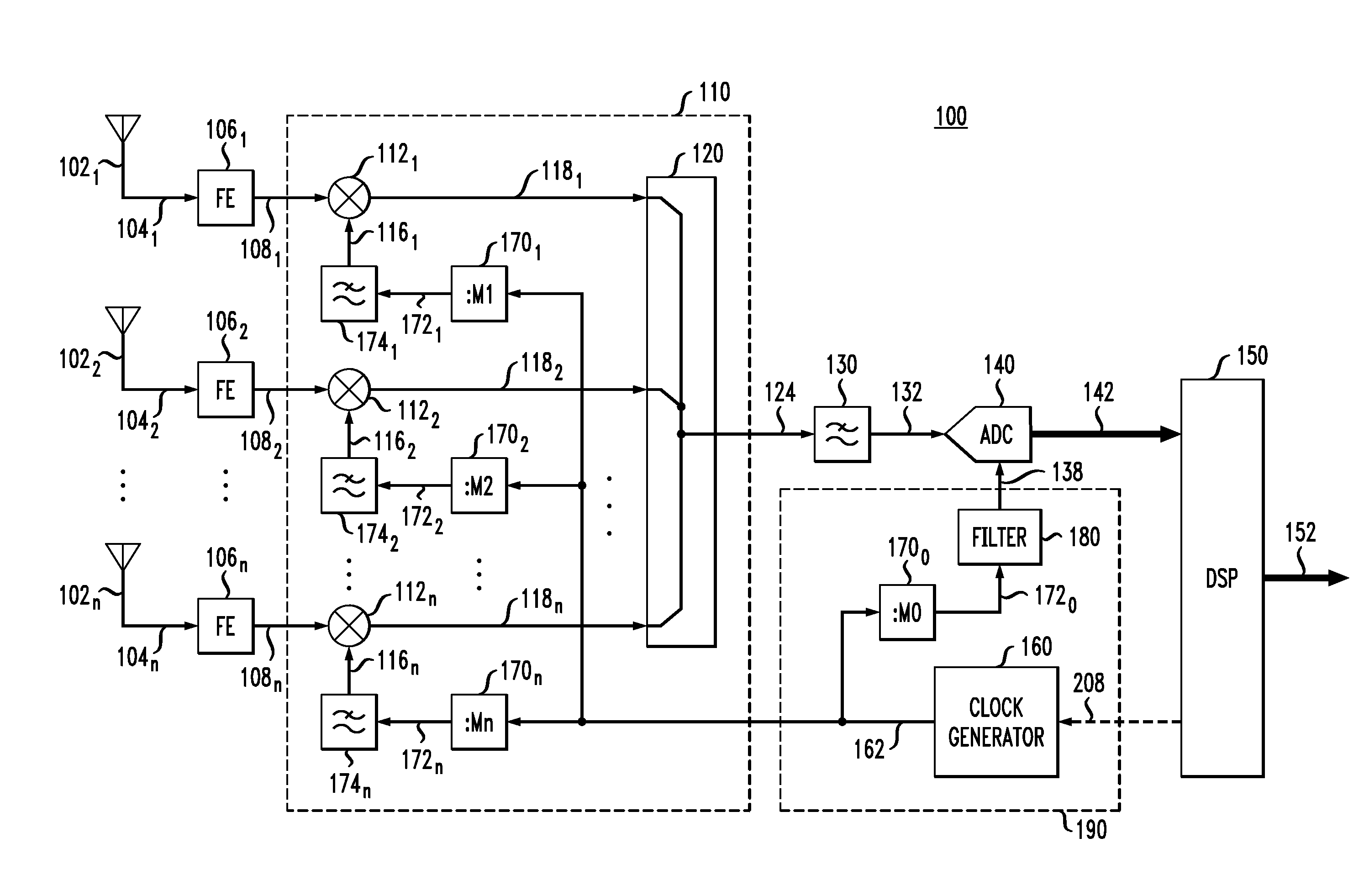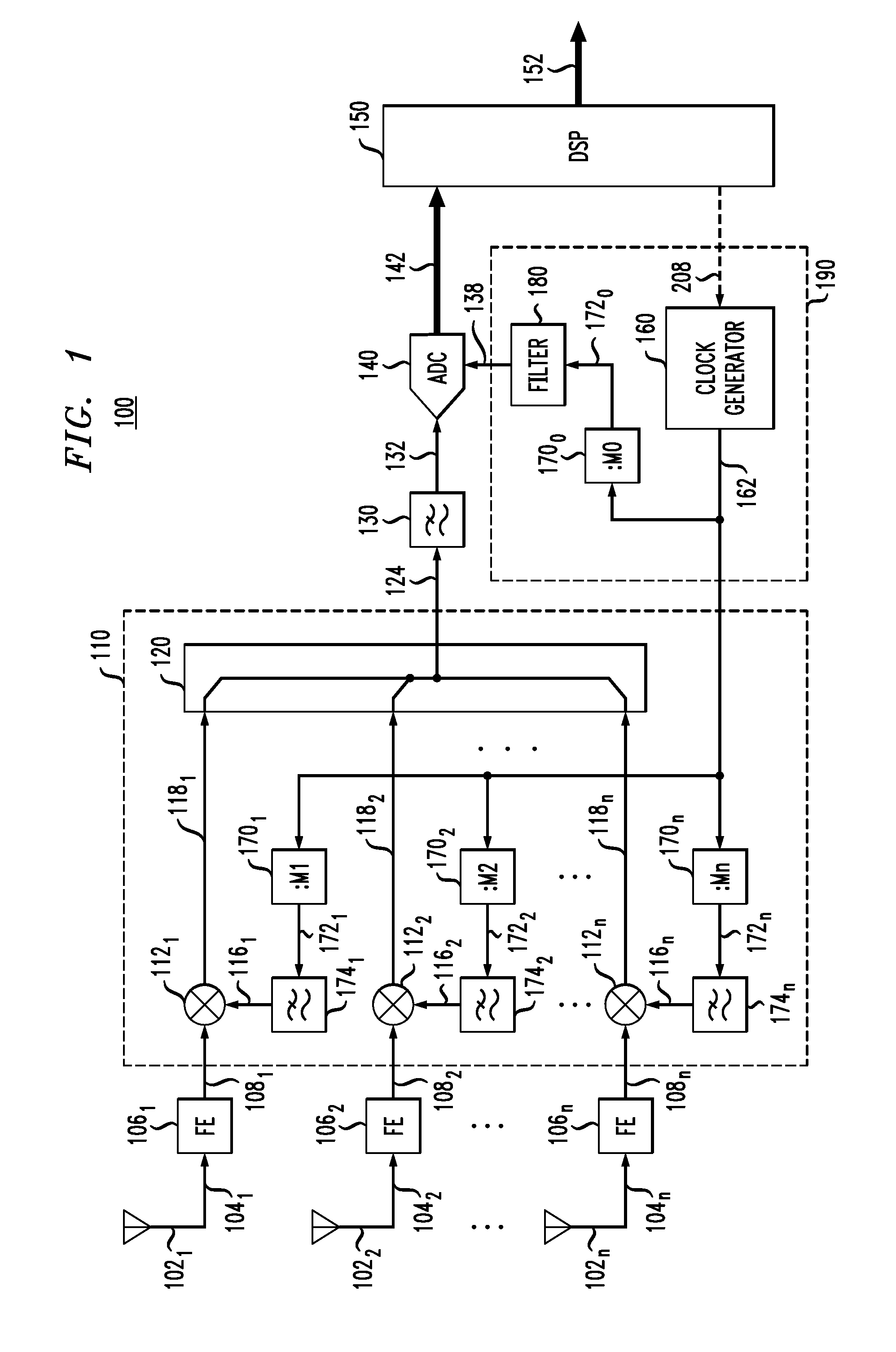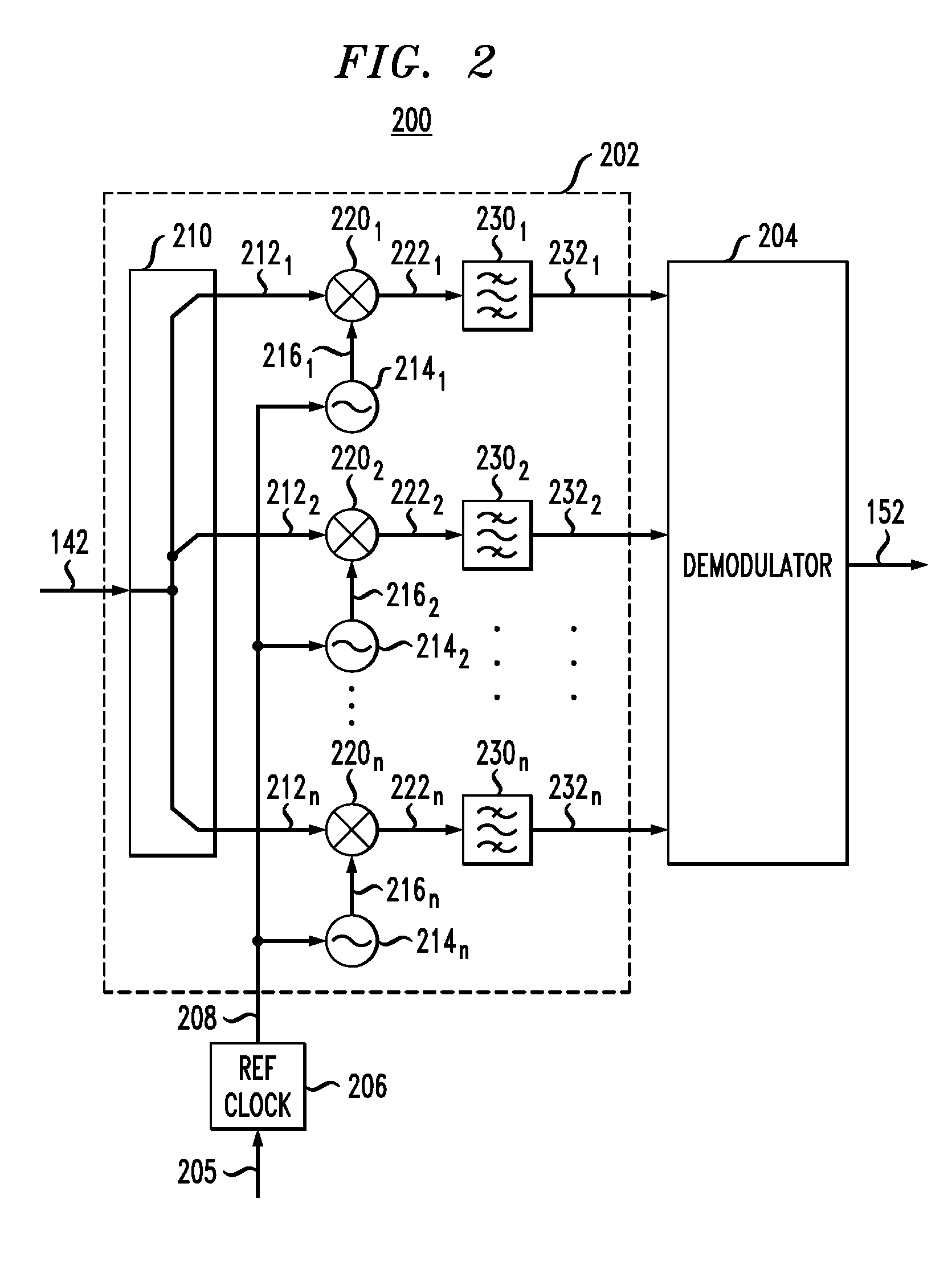Multichannel receiver
a multi-channel receiver and receiver technology, applied in the field of communication equipment, can solve problems such as problems in the design of receivers, and achieve the effects of reducing phase noise and emi, reducing power consumption, and small siz
- Summary
- Abstract
- Description
- Claims
- Application Information
AI Technical Summary
Benefits of technology
Problems solved by technology
Method used
Image
Examples
Embodiment Construction
[0006]Whereas multichannel-receiver architectures often need local oscillator (LO) signals in multiple spectral bands, a phase-lock loop (PLL) for providing a LO signal is a relatively complex circuit. Such a circuit can take up a relatively large chip area and / or consume considerable power. In addition, a PLL may result in an increased level of electromagnetic interference (EMI), ground bouncing, frequency pulling, and other deleterious effects that tend to degrade the overall receiver performance.
[0007]An embodiment of a disclosed multichannel receiver may use a single master clock to generate (i) the sampling-clock signal that sets the sampling rate of the receiver's ADC and (ii) multiple electrical local-oscillator signals that are used in various channels of the receiver's analog down-converter to translate to intermediate frequency the RF signals received on the receiver's array of antennas. The multichannel receiver may employ a plurality of interconnected frequency dividers ...
PUM
 Login to View More
Login to View More Abstract
Description
Claims
Application Information
 Login to View More
Login to View More - R&D
- Intellectual Property
- Life Sciences
- Materials
- Tech Scout
- Unparalleled Data Quality
- Higher Quality Content
- 60% Fewer Hallucinations
Browse by: Latest US Patents, China's latest patents, Technical Efficacy Thesaurus, Application Domain, Technology Topic, Popular Technical Reports.
© 2025 PatSnap. All rights reserved.Legal|Privacy policy|Modern Slavery Act Transparency Statement|Sitemap|About US| Contact US: help@patsnap.com



